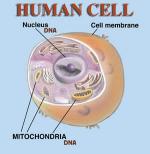|
This section contains 1,900 words (approx. 7 pages at 300 words per page) |

|
Plants are multicellular organisms composed of millions of plant cells. Although individual cells may differ greatly from each other in mature structure, all plant cells share the same basic eukaryotic organization. That is, each plant cell possesses a nucleus and cytoplasm with subcellular organelles. In addition to these components, all plant cells possess a cell wall of cellulose. Although plant cells begin their life with a full complement of cellular components, some specialized cell types lose their nuclei and all or part of their cytoplasm as they mature.
Components of a Cell
Cell Wall.
Plant cells, unlike animal cells, are surrounded by a relatively thin but mechanically strong cell wall. Plant cell walls consist of a complex mixture of polysaccharides, proteins, and phenolic polymers that are secreted by the protoplast and then assembled into an organized network linked together by covalent and hydrogen bonds. Cell walls function in...
|
This section contains 1,900 words (approx. 7 pages at 300 words per page) |

|


